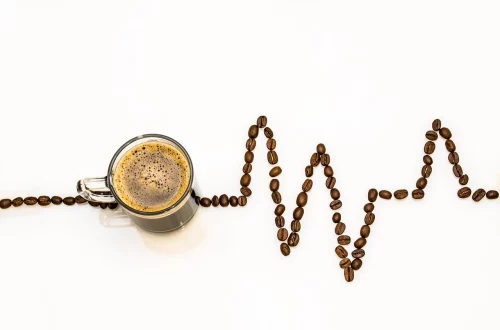
How Many Ounces Are in 9 Pounds? A Quick Conversion Guide
Understanding weight conversions is essential for various everyday tasks, from cooking to shipping packages. When dealing with different units of measurement, it’s crucial to know how to convert them accurately to avoid confusion and ensure precision. In the United States, the imperial system is commonly used, which includes pounds and ounces as standard weight measurements.
Many people often find themselves needing to convert pounds to ounces, especially when they’re following a recipe or determining the weight of an item. The conversion process, while relatively straightforward, can lead to misunderstandings if not done correctly. With various scenarios requiring this knowledge—from baking to fitness tracking—it’s beneficial to have a clear grasp of how these measurements relate to each other.
As we delve into the specifics of converting pounds to ounces, it’s important to recognize the significance of these units in practical applications, as well as in various industries, including culinary arts, shipping, and even healthcare. By mastering these conversions, you can enhance your efficiency and accuracy in tasks that require precise measurements.
Understanding the Basics of Weight Measurement
Weight is a fundamental measurement that allows us to quantify how heavy objects are. In the imperial system, which is widely used in the United States, weight is primarily measured in pounds (lbs) and ounces (oz). One pound is equivalent to 16 ounces, making it essential to understand this relationship for any conversions.
The pound is often used for measuring heavier items, such as produce, meat, and packaged goods, while ounces are typically used for lighter items, including spices, smaller food quantities, and various ingredients in cooking. This distinction helps users gauge how much they are dealing with in a practical context.
To convert pounds to ounces, you simply multiply the number of pounds by 16. For example, if you have 1 pound, it equals 16 ounces. If you have 2 pounds, it equals 32 ounces, and so on. This straightforward multiplication makes it easy to convert larger weights as well.
In various scenarios, accurate weight measurements are crucial. For instance, in cooking, precise measurements can impact the final outcome of a dish, especially in baking, where chemical reactions rely on exact ingredient amounts. Similarly, in shipping, knowing the exact weight of a package can affect costs and logistics.
These measurements are not only vital in everyday tasks but also play a significant role in industries like healthcare. In medical settings, accurate weight measurements are essential for dosing medications and monitoring patient health. Thus, understanding weight conversions is a skill that transcends everyday use and is beneficial in numerous professional fields.
Converting 9 Pounds to Ounces
When tasked with converting 9 pounds into ounces, the process is simple and straightforward. As mentioned earlier, the conversion factor between pounds and ounces is 16. Therefore, to find out how many ounces are in 9 pounds, you would perform the following calculation:
\[ \text{Ounces} = \text{Pounds} \times 16 \]
Applying this formula:
\[ \text{Ounces} = 9 \times 16 \]
This calculation yields:
\[ \text{Ounces} = 144 \]
Thus, there are 144 ounces in 9 pounds. This conversion is particularly useful in various contexts, whether you are preparing a large meal, measuring ingredients for a recipe, or shipping items that require precise weight specifications.
Understanding this conversion can also enhance your skills in cooking and baking. For instance, if a recipe calls for a specific number of ounces, and you only have a weight measurement in pounds, knowing how to convert between the two can save you time and ensure your dish turns out correctly.
Additionally, this knowledge can be applied in fitness and health-related contexts. Many individuals track their food intake and exercise regimens, where understanding weight measurements is crucial. Whether calculating the weight of food for portion control or determining the weight of equipment for workouts, mastering these conversions contributes to better management of health-related goals.
In summary, knowing that 9 pounds equals 144 ounces can be a handy piece of information in numerous daily tasks and professional applications.
Practical Applications of Weight Conversions
Understanding how to convert between pounds and ounces is more than just a mathematical exercise; it has real-world applications that affect various aspects of daily life. From culinary practices to postal services, the ability to convert weights accurately can streamline processes and improve outcomes.
In the culinary world, for example, chefs and home cooks often encounter recipes that require precise measurements. When a recipe specifies ingredients in ounces but your scale measures in pounds, knowing how to convert can make the difference between a successful dish and a culinary disaster. For instance, if you’re preparing a large batch of cookies that requires 2 pounds of flour, knowing that this is equivalent to 32 ounces can help you measure accurately without second-guessing yourself.
In the shipping industry, weight conversions play a crucial role in determining shipping costs. Carriers often charge based on the weight of a package, and knowing how to convert between pounds and ounces allows businesses and individuals to calculate shipping fees accurately. For example, if you have a package weighing 5 pounds, understanding that this equals 80 ounces can help you choose the right shipping option based on weight limits.
Moreover, in health and fitness, weight management is key. Individuals who track their food intake often need to convert weights to ensure they are meeting dietary goals. Whether measuring portion sizes or calculating nutritional information, the ability to convert pounds to ounces easily can support healthier lifestyle choices.
Additionally, educational settings, particularly in science and math classes, often cover weight conversions as part of the curriculum. Students learn how to apply these conversions to various scenarios, reinforcing their understanding of measurement and its relevance in real life. Thus, mastering weight conversions not only aids in day-to-day activities but also lays a foundation for more complex mathematical concepts.
In conclusion, the ability to convert pounds to ounces, such as knowing that 9 pounds equals 144 ounces, is a valuable skill that enhances efficiency across multiple domains, from cooking to shipping and health management.
Common Mistakes in Weight Conversions
Despite the straightforward nature of converting pounds to ounces, there are common pitfalls that individuals might encounter. Awareness of these potential mistakes can help ensure accurate measurements and conversions in various contexts.
One of the most frequent errors is forgetting the conversion factor. As established, 1 pound equals 16 ounces. If someone mistakenly uses a different factor, such as 10 or 12, the conversion will be incorrect. This can lead to significant discrepancies, especially in cooking or shipping, where precise measurements are crucial.
Another common mistake involves miscalculating when dealing with larger weights. For instance, when converting 5 pounds to ounces, the correct calculation is \(5 \times 16 = 80\) ounces. However, someone might mistakenly calculate it as \(5 \times 10\), resulting in only 50 ounces. Such errors, while seemingly minor, can compound over time and lead to larger issues, particularly in recipes or inventory management.
Some individuals may also confuse the units of measurement altogether, mixing up pounds with kilograms or ounces with grams. This confusion can arise when dealing with international recipes or products, where different measurement systems are common. It’s essential to familiarize yourself with the units being used and ensure you’re converting within the same system to avoid errors.
Additionally, relying solely on mental calculations without writing them down can lead to mistakes. Jotting down the conversion and calculations can help keep track of numbers and provide a reference point to avoid confusion.
Lastly, not using a reliable conversion tool or calculator can lead to inaccuracies. While manual calculations are often sufficient, utilizing digital tools or conversion apps can provide quick and accurate results, especially when dealing with more complex conversions.
By being aware of these common mistakes, you can improve your accuracy in weight conversions, ensuring that your cooking, shipping, and health-related tasks are executed seamlessly.
In summary, while converting weights like pounds to ounces is a simple process, being mindful of common errors can enhance your proficiency in handling these measurements effectively.
This article is for informational purposes only and should not be considered medical advice. For any health-related concerns or conditions, please consult a qualified healthcare professional.




